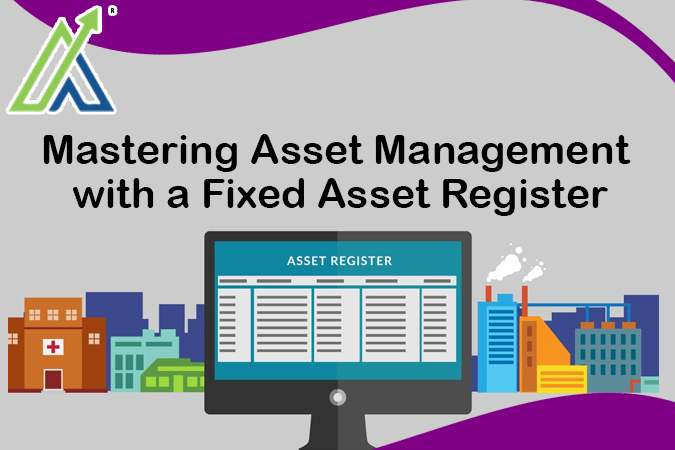A Fixed Asset Register (FAR) is a must-have tool for keeping track of all the physical assets in a business. Think of it as a detailed logbook for everything from machinery to office furniture. It helps in tracking asset usage, depreciation, and maintenance. Let’s break down how a Fixed Asset Register boosts asset utilization with some real-life examples.
Keeping Track of Assets
First off, the FAR is a comprehensive list of all assets. It includes details like the asset’s description, purchase date, cost, and a unique ID.
Example: A factory logs its new CNC machine in the FAR, listing its serial number, purchase date, and cost, so it’s always accounted for and easy to identify.
Tracking Depreciation
The FAR keeps tabs on how assets lose value over time. This is crucial for financial planning and reporting.
Example: An IT company uses the FAR to monitor the depreciation of its computers, helping the finance team plan for replacements and budget effectively.
Scheduling Maintenance
Regular maintenance keeps assets in top shape. The FAR helps schedule and record these activities, making sure nothing gets missed.
Example: A delivery company schedules regular maintenance for its trucks using the FAR, reducing downtime and extending the trucks’ life.
Maximizing Asset Use
With a clear view of all assets, businesses can make sure they’re used efficiently. The FAR helps avoid underutilization or idle assets, maximizing return on investment.
Example: A construction firm sees through the FAR that a bulldozer isn’t being used enough and moves it to a new project, increasing its productivity.
Assisting with Audits
Accurate FAR records are vital for audits and compliance. They show a clear trail of asset acquisition, use, and disposal.
Example: During an audit, a hospital presents its FAR with detailed records of all medical equipment, proving compliance with regulations.
Informing Decisions
The FAR provides data for making smart decisions about buying, disposing of, or replacing assets. This ensures businesses invest in assets that support their long-term goals.
Example: A retail chain looks at FAR data and decides to replace old POS systems with new ones, improving customer service and efficiency.
Supporting Financial Reports
A well-maintained FAR aid in accurate financial reporting by giving detailed info on asset values and depreciation. This is key for preparing balance sheets and profit and loss statements.
Example: An energy company uses the FAR to calculate the total depreciation of its solar panels, which shows up in its annual financial statements, reflecting its true financial state.
Managing Asset Disposal
When assets are no longer useful, the FAR ensures the disposal process is recorded correctly, maintaining transparency and compliance.
Example: A school uses the FAR to track and document the disposal of old lab equipment, making sure all records are updated and the disposal is handled properly.
Questions to Understand your ability
Ques1: What’s the main job of a Fixed Asset Register (FAR)?
- Tracking sales
- Scheduling employees
- Keeping tabs on physical assets
- Boosting customer satisfaction
Ques2: Which info is NOT in a FAR?
- Asset details
- Employee ID
- Purchase date
- Asset cost
Ques3: How does a FAR help with financial planning?
- Tracks employee performance
- Monitors asset depreciation
- Manages customer data
- Plans marketing strategies
Ques4: Why schedule maintenance with a FAR?
- Cut ad costs
- Extend asset life
- Get more customers
- Boost social media presence
Ques5: Why are FAR records key for audits?
- Increase profits
- Show compliance
- Boost employee morale
- Improve product design
Conclusion
In other words, Fixed Asset Register is an asset checklist that is of great importance to any business organization that aims to improve the management of its assets. It offers specifics about the employment, deterioration, and maintenance of the assets with precise profiled information that assists the business organizations in efficient decision-making, enhancement in productivity, and legal compliance. Indeed, the idea of maintaining an accurate and efficient FAR is central to asset management and will go a long way toward supporting the goals of the company, whether it is in the best use of assets or in optimizing the company’s financial statements.
FAQ’s
It’s crucial for planning and reporting. It shows how assets lose value, helping with budgeting and knowing when to replace them.
It schedules and records regular upkeep, keeping assets in good shape and reducing downtime.
Yes, it gives a clear picture of all assets, ensuring they are fully used and not sitting idle, maximizing investment returns.
Accurate records provide a clear trail of asset use, proving compliance with rules and ensuring transparency.
It provides data for smart choices about buying, disposing of, or replacing assets, aligning investments with long-term goals.
It’s essential for making balance sheets and profit/loss statements, showing the real financial health of a business.
When assets are no longer needed, the FAR keeps accurate records of how they were disposed of. This makes sure that everything is clear and follows the law.

